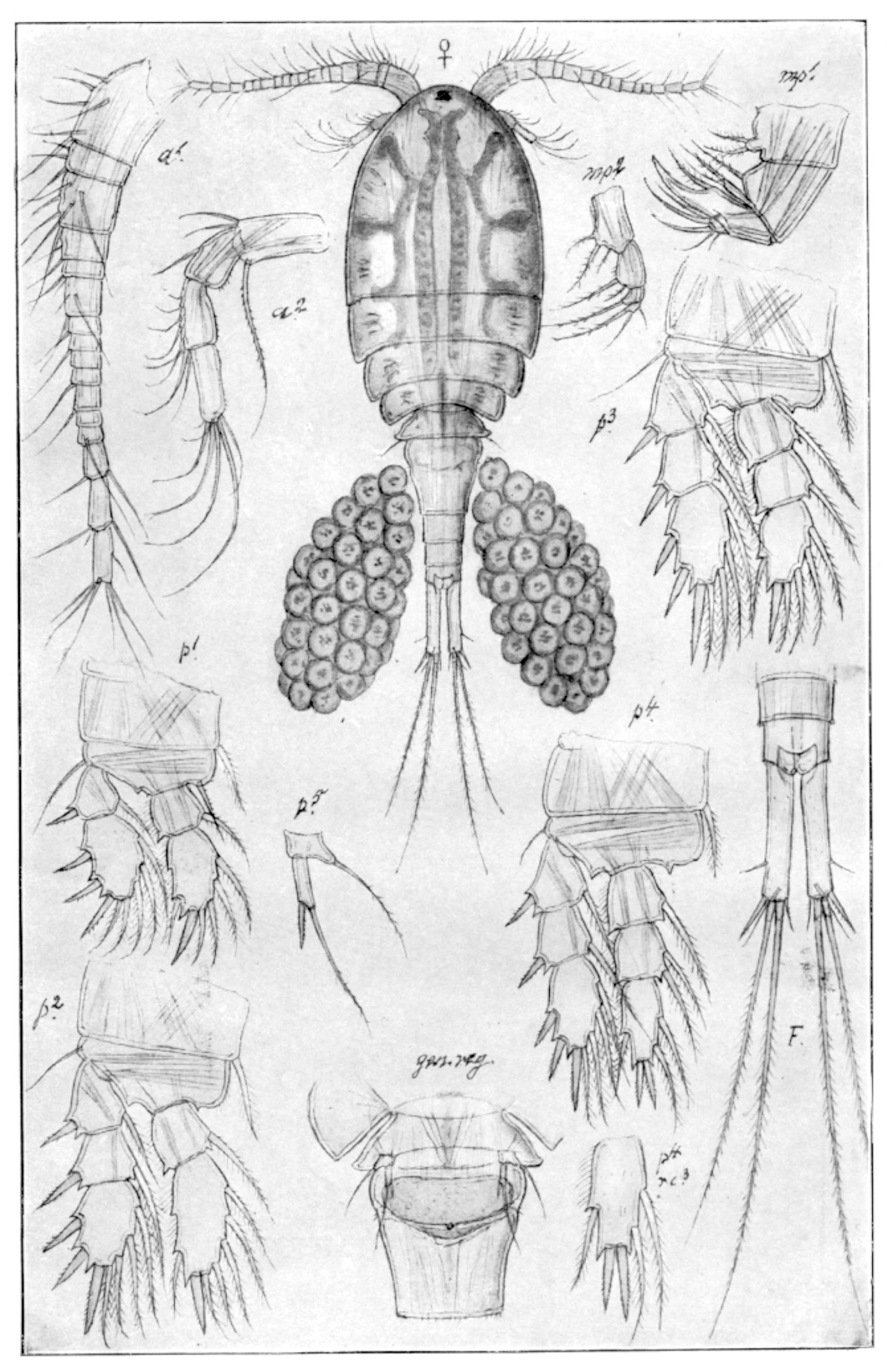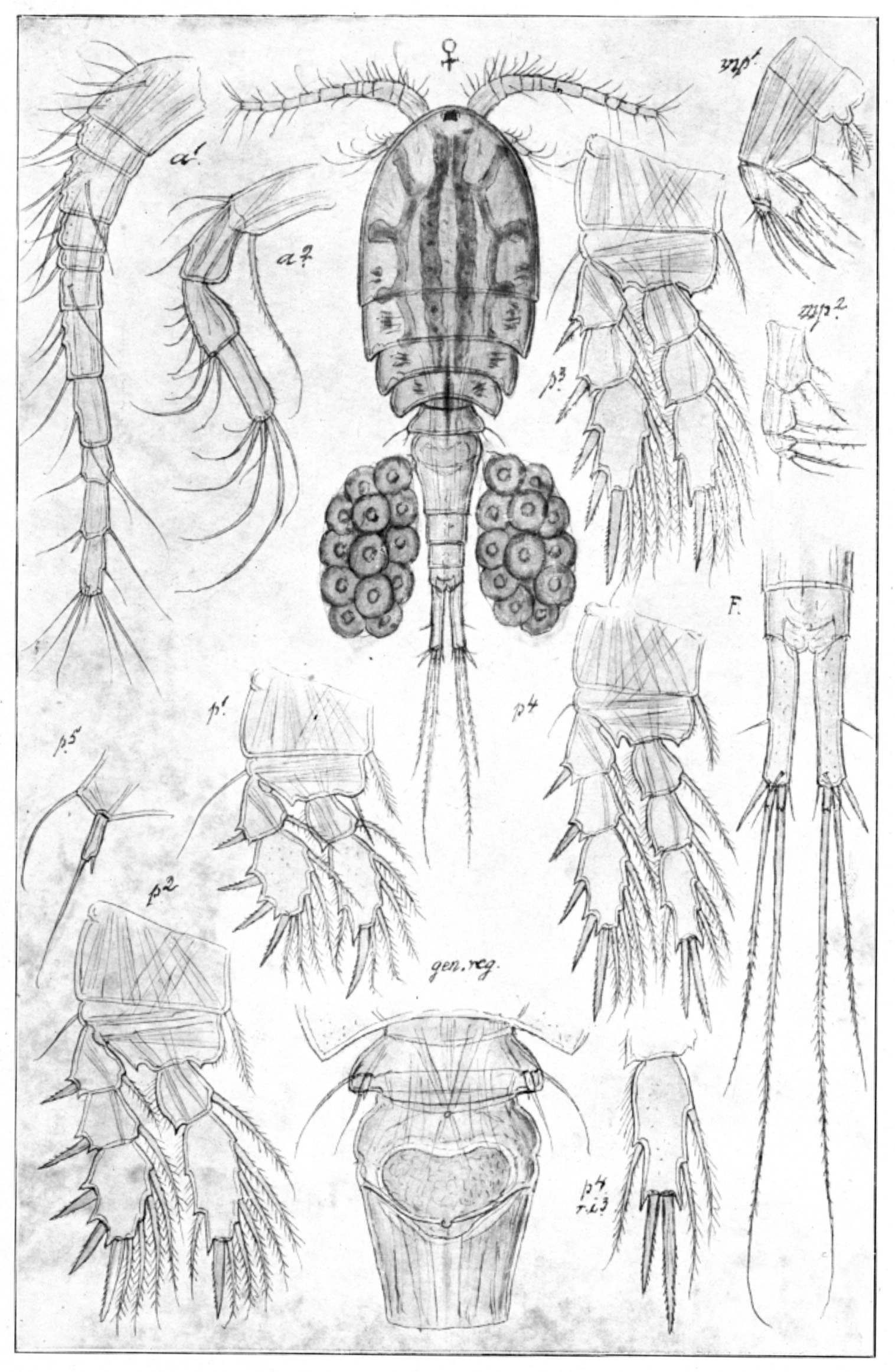Diacyclops languidus
The movements of Diacyclops languidus are very slow and it is the only Diacyclops species which have antennas that consists of 16 joints. It is a rare species not found in the northern parts of Norway.
Key characteristics
Diacyclops languidus (female)
Diacyclops languidus is a small species which may co-occur with D. nanus but is distinguished from this species by the appearance of the tail. This is shorter in D. languidus than in D. nanus, and the lateral seta is attached close to the end of the tail. Further, D. languidus is the only Diacyclops species which have antennas that consists of 16 joints. Its colour is uniformly whitish grey.
Female: Length 0.7–1.0 mm
Male: Length 0.5–0.8 mm
Ecology and distribution
D. languidus is a littoral species, and do also occur in groundwater. G.O. Sars found this species in 1863 in shallow ponds and ditches in Oslo. Since Sars the species has been found in a limited number of small to medium sized lakes in the southern part of the country. The majority of records are from the lowland but the species is found in a locality situated at 715 m a.s.l. pH and conductivity vary respectively between 4.5 and 6.9 and 1.0 and 34 mS/m.
| Vitenskapelig navn | < 4,5 | 4,5 - 4,9 | 5,0 - 5,4 | 5,5 - 5,9 | 6,0 - 6,4 | 6,5 - 7,0 | 7,0 - 7,4 | > 7,5 |
|---|---|---|---|---|---|---|---|---|
| 0 | 2,2 | 1,1 | 1,8 | 0,9 | 0,8 | 0 | 0 |
| Vitenskapelig navn | < 1,0 | 1,0 - 1,4 | 1,5 - 1,9 | 2,0 - 2,9 | 3,0 - 3,9 | 4,0 - 4,9 | 5,0 - 6,9 | 7,0 - 9,9 | > 10,0 |
|---|---|---|---|---|---|---|---|---|---|
| 0,4 | 0,4 | 0,4 | 0,7 | 2,1 | 0,6 | 1,2 | 0,9 | 0,9 |
| Vitenskapelig navn | < 0,01 | 0,01 - 0,09 | 0,1 - 0,9 | 1,0 - 9,9 | 10,0 - 99 | 100 - 999 | > 1000 |
|---|---|---|---|---|---|---|---|
| 2 | 0 | 0,3 | 1,1 | 0,5 | 1,3 | 0 |
| Vitenskapelig navn | < 100 | 100-299 | 300-499 | 500-699 | 700-999 | >1000 |
|---|---|---|---|---|---|---|
| 0,7 | 1,7 | 0,3 | 0 | 0,3 | 0 |
Look alikes
Diacyclops nanus

